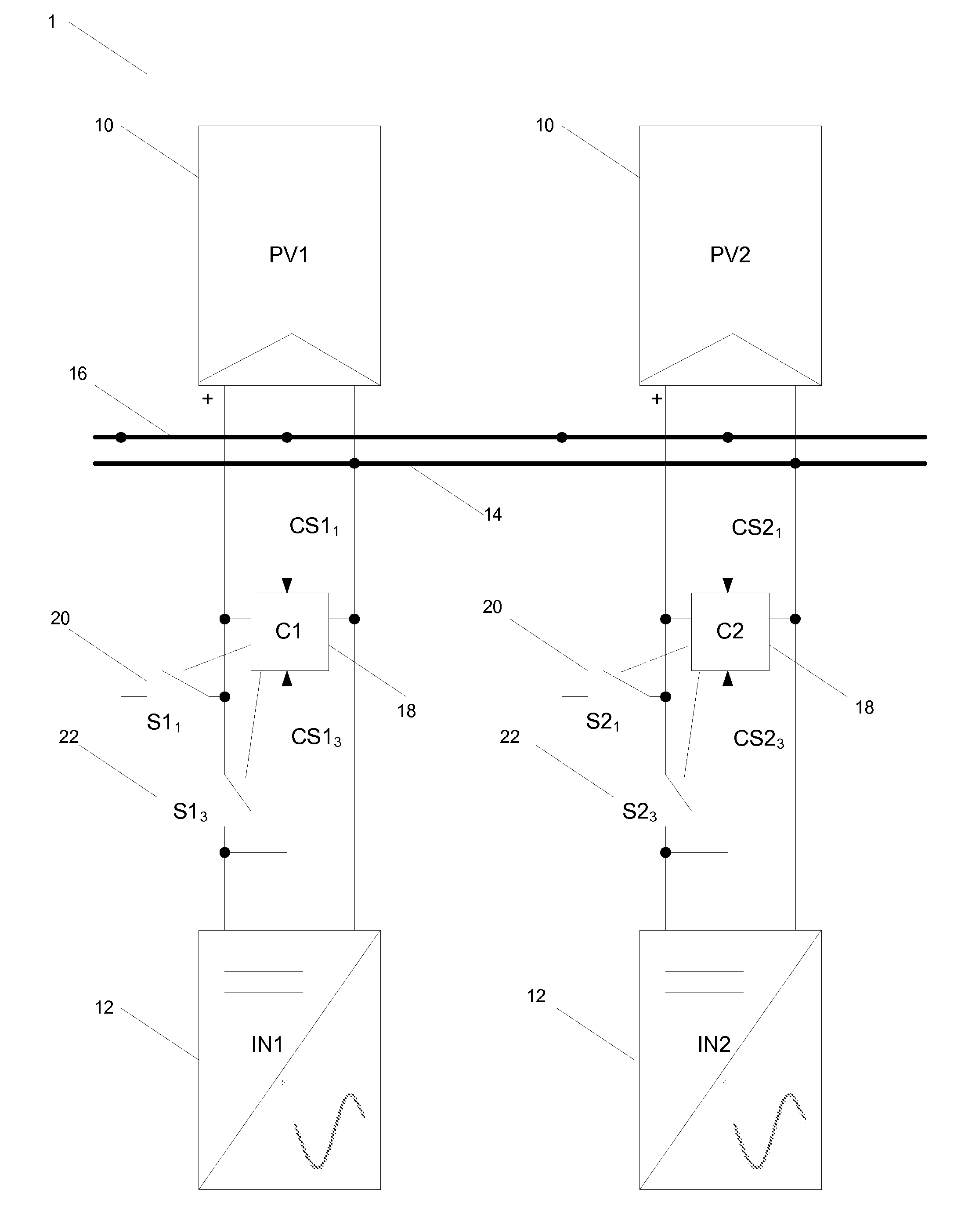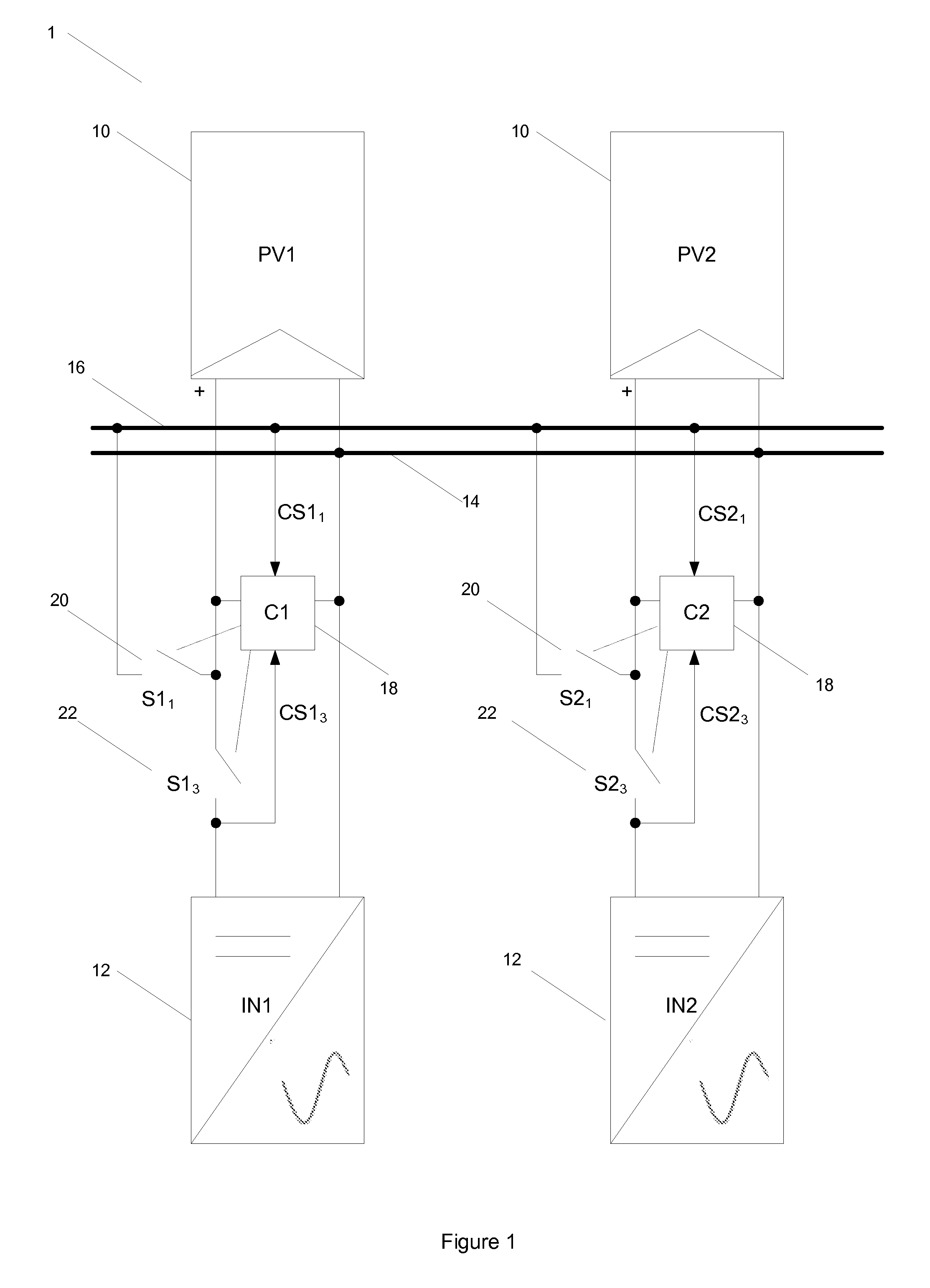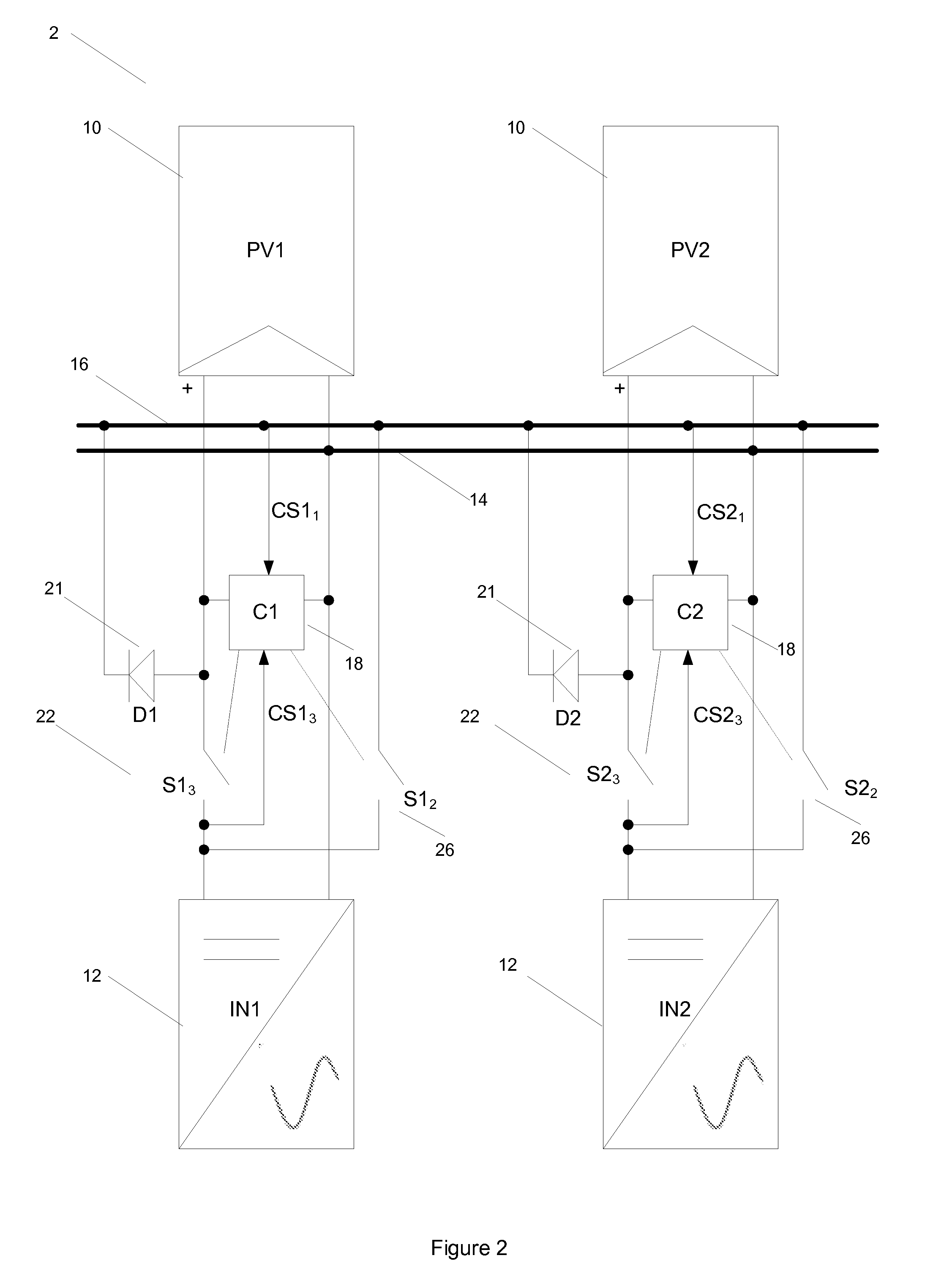Solar Photovoltaic Systems
a photovoltaic system and solar energy technology, applied in the direction of emergency protective circuit arrangement, dc-ac conversion without reversal, dc network circuit arrangement, etc., can solve the problem of system module loss
- Summary
- Abstract
- Description
- Claims
- Application Information
AI Technical Summary
Benefits of technology
Problems solved by technology
Method used
Image
Examples
Embodiment Construction
[0026]The embodiments show a solar photovoltaic module array connected to inverters, with the inverters being connected to the grid (mains electric grid). A number of connection schemes between inverters and solar modules on the array are possible, two of which are presented in the embodiments in FIGS. 1 and 2.
[0027]Referring to FIG. 1, this shows an embodiment of the solar PV power generation system comprising solar PV panels 10 (PV1, PV2) and power conditioning units 12 (IN1, IN2). Further solar PV panels and power conditioning units may also be added and connected in the same manner as PV1 and PV2. Each solar PV panel (PV1, PV2) is coupled to a respective power conditioning unit (IN1, IN2) to transmit dc power from the solar PV panels to the respective power conditioning unit for conversion to an ac mains output. A power distribution controller 18 (C1, C2) is coupled between each solar PV panel and power conditioning unit pair and controls the opening and closing of switches conn...
PUM
 Login to View More
Login to View More Abstract
Description
Claims
Application Information
 Login to View More
Login to View More - R&D
- Intellectual Property
- Life Sciences
- Materials
- Tech Scout
- Unparalleled Data Quality
- Higher Quality Content
- 60% Fewer Hallucinations
Browse by: Latest US Patents, China's latest patents, Technical Efficacy Thesaurus, Application Domain, Technology Topic, Popular Technical Reports.
© 2025 PatSnap. All rights reserved.Legal|Privacy policy|Modern Slavery Act Transparency Statement|Sitemap|About US| Contact US: help@patsnap.com



